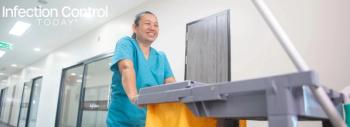
Unauthorized UVC Devices in Health Care Pose Legal and Safety Risks
Unauthorized UVC disinfection devices are quietly entering hospitals, bypassing FDA clearance and basic safety standards, putting patient safety and institutional compliance at serious risk.
In the evolving landscape of infection prevention, UVC disinfection technologies have gained popularity, but not all products on the market are authorized for use. Many manufacturers have adopted a risky and misleading practice: claiming their device performs just as well as US Food and Drug Administration- (FDA-) cleared systems by citing unrelated studies or data from other companies. While this may seem plausible to uninformed buyers, it is a clear violation of federal regulations and a growing concern within the health care industry.
Infection Control Today® (ICT®) spoke with Gunner Lyslo, CEO and founder of
According to Lyslo, manufacturers without FDA 510(k) clearance are not permitted to promote, market, or even discuss their devices with health care institutions. “They are not allowed to promote or market, and so to put that in layman's terms, they're not even allowed to set foot in a hospital,” Lyslo said.
These products are classified as Class II medical devices, and the FDA requires that manufacturers submit comprehensive data for review, including safety, efficacy, and performance under worst-case conditions, before any promotional activity is allowed.
Despite these rules, unauthorized devices continue to show up at industry conferences and even in health care facilities. Some vendors present abstracts, white papers, or peer-reviewed studies as evidence of efficacy. However, none of these are considered sufficient by the FDA. Only data reviewed and cleared by the agency can validate a product’s safety and effectiveness. “The FDA demands that you meet substantial equivalents to the category, to the predicate, and they go through an exhaustive review,” Lyslo said.
Morris Miller, CEO of Xenex agreed. "Every day, we hear from our hospital customers that another UV provider has contacted them in hopes of winning their business," Miller told ICT. "What's disappointing is that they are intentionally misleading hospital IPs and EVS directors. The FDA has clearly stated that UV products used to reduce the microbial load in hospital rooms containing medical equipment (beds, wheelchairs, IV poles, etc.) must be FDA authorized."
The implications go beyond regulatory violations. Many of these unauthorized UVC products lack basic safety certifications, such as UL (Underwriters Laboratories) or ETL (Intertek). These certifications are standard for everyday appliances, like toasters, to ensure they are safe for consumer use. Yet some hospitals are unknowingly deploying unverified devices in patient care environments without these fundamental safety assurances.
Health care decision-makers, especially infection preventionists and environmental services directors, are urged to ask a simple question before engaging with any UVC vendor: Is your product FDA authorized? If the answer is no, the conversation should end immediately.
The FDA is expected to begin stricter enforcement, but until then, awareness is key. The use of unauthorized devices not only undermines infection prevention efforts but also puts patient safety and institutional compliance at risk. As the regulatory framework catches up to the proliferation of these technologies, health care leaders must stay informed and vigilant.
Newsletter
Stay prepared and protected with Infection Control Today's newsletter, delivering essential updates, best practices, and expert insights for infection preventionists.






